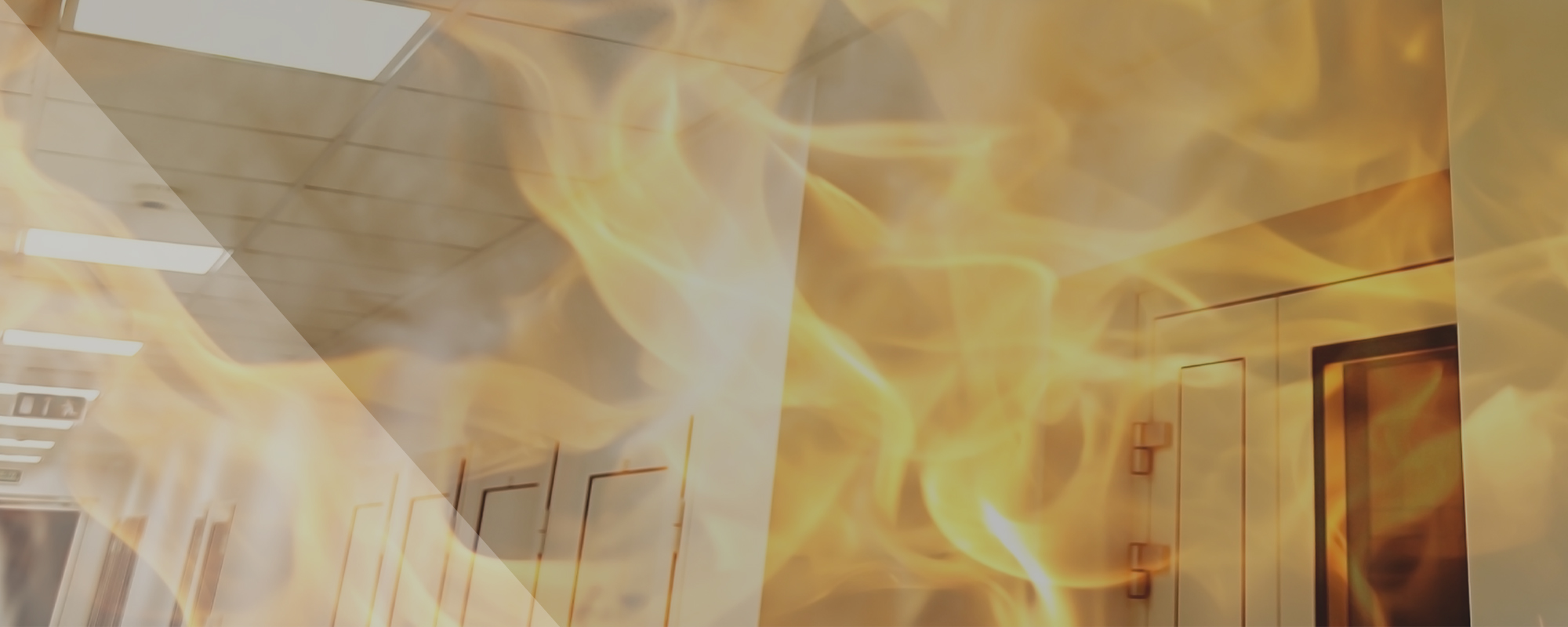
The Crucial Role of Fire Compartmentation Surveys
Introduction
In the realm of fire safety, certain aspects often take centre stage, such as smoke alarms, fire extinguishers, and emergency exits. However, there is one essential element that tends to remain in the shadows but plays a pivotal role in protecting lives and property – fire compartmentation. Given the importance of fire compartmentation surveys, it’s critical that regular surveys take place to establish that adequate fire compartmentation is in place, or the work required to ensure it is.
The Grenfell Tower Inquiry has reinforced the importance of Fire Compartmentation and in the Phase 1 report, stated that “the building suffered a total failure of compartmentation”.
Understanding Fire Compartmentation
Before delving into the significance of fire compartmentation surveys, it’s essential to comprehend the concept itself. Fire compartmentation is the practice of dividing a building into separate, fire-resistant compartments using fire-rated walls, ceilings, and floors. The purpose is to confine a fire to its area of origin, thereby limiting its ability to spread rapidly throughout the building. Each compartment is designed to contain the fire for a specific duration, allowing occupants to escape and firefighters to extinguish the blaze.
What are the legal requirements?
1) The Regulatory Reform (Fire Safety) Order 2005
This places a duty on the Responsible Person (the person who is culpable for the safety of all employees, as well as any person lawfully on the premises or in the vicinity and at risk from fire) to undertake general fire precautions. This means in all premises, subject to the order, that measures must be taken to secure and ensure the means of escape can be safely and effectively used and measures are taken to reduce the risk of Fire spread on the premises. Adequate and well-maintained compartmentation is integral to these requirements.
Article 17 of the order makes it a legal requirement that where necessary, to safeguard the safety of relevant persons the Responsible Person must ensure that ‘the premises’ are subject to a suitable system of maintenance and are maintained in an efficient state, efficient working order and in good repair.
What happens if these legal requirements are not met?
The consequences of breaching fire safety law can be serious and result in hefty fines, and in more severe cases may lead to a custodial sentence, especially if someone is injured.
The Fire and Rescue Service may issue an enforcement notice requiring you to make certain improvements to your premises to meet your obligations. In extreme cases they may issue a prohibition notice to restrict the use of part or even all of your premises until improvements are made.
Failure to comply with such notices or with any duty imposed by the Fire Safety Order is an offence.
Failure to meet fire safety regulations can also cause reputational damage to businesses, and as such, compliance with the law is extremely important
2) The Building Regulations 2010, Approved Document B Volume 2 (2019 edition)
Approved Document B of the Building Regulations, which provides guidance on how to comply with the building, defines a fire compartment as ‘A building or part of a building, comprising one or more rooms, spaces or storeys, that is constructed to prevent the spread of fire to or from another part of the same building or an adjoining building.
Approved Document B provides detailed guidance on the minimum fire resistance periods and the maximum compartment sizes for different types of buildings which varies depending on the type, use and height of the building, and the size and occupancy of the compartments.
All work must meet all relevant requirements of the Building Regulations., if not enforcement may follow, which could result in a notice to stop works, attendance at a magistrates’ court, and a fine
Importance of Fire Compartmentation Surveys:
Life Safety
The foremost reason for conducting fire compartmentation surveys is to ensure the safety of building occupants. A well-maintained and properly compartmentalized building can significantly reduce the risk of injury or death in case of a fire. Fire compartmentation surveys identify any breaches in fire-resistant barriers, ensuring they are promptly repaired or replaced.
Property Protection
Beyond human safety, fire compartmentation also plays a crucial role in safeguarding property and assets. By preventing the uncontrolled spread of fire, these surveys minimize damage to the building’s structure and contents. This, in turn, reduces repair and replacement costs for businesses and homeowners alike.
Compliance with Regulations
Fire compartmentation is not just a good practice; it’s often a legal requirement. Building codes and regulations mandate that structures must have effective fire compartmentation systems in place. Regular surveys ensure compliance with these regulations, avoiding potential legal issues and fines.
Early Detection of Compartment Breaches
Fire compartmentation can deteriorate over time due to factors like wear and tear, renovations, or neglect. Fire compartmentation surveys proactively identify any breaches or deficiencies, allowing for timely maintenance or upgrades. This proactive approach can be the difference between a minor incident and a catastrophic fire.
Enhanced Firefighter Safety
Firefighters are the heroes who risk their lives to combat fires and save people and property. Effective fire compartmentation not only protects occupants but also ensures a safer working environment for firefighters. It prevents unexpected fire spread, reducing the dangers they face while responding to an emergency.

Why Choose Sircle
Expertise and Assurance: Our team comprises of experienced and qualified staff who specialise in Fire Safety Surveys. Sircle works closely with clients throughout each stage of the survey – providing clear advice to ensure the legislative requirements are understood, producing survey reports that set out the action needed, and project manage works to a successful completion.
Regulatory Compliance: We have a detailed working knowledge of fire safety legislation and the Building Regulations, ensuring that we can provide clear advice on requirements.
Independent approach:We provide a professional independent opinion and make recommendations on the best return for investment. If we don’t think you need to repair or replace items, we will state this in our reports.
Comprehensive Assessments and Advice: Our Fire Compartmentation Surveys follow a structured step-by-step approach using mobile-based technology to generate data and reports that inform the advice we provide on the next steps.
Peace of Mind: We provide clarity on the actions needed to ensure your building is compliant with legislation. This clarity prioritises lives and property and maximises investment to avoid issues escalating.
Procurement and Project Management support: Following agreement of the next steps, we can provide support procuring repairs and replacements and project management to ensure the successful completion of works and signed off. We recommend that UKAS-accredited contractors are used to undertake fire safety work, and this is followed up with an audit to sign off the works.
Conclusion
Fire compartmentation is a crucial element of Fire Safety ensuring that fires are contained, and occupants have a better chance of escape. By prioritising fire compartmentation, we can make our buildings more secure, compliant with regulations, and ultimately, save lives.
A detailed Fire Compartmentation survey and report can provide clarity on actions needed to ensure that legal requirements are met and investment is maximised.
Sircle has a range of Fire Safety surveys to ensure you remain compliant, click here to find out more, or speak to us and we would be happy to provide some advice.
By Anthony Walker FRICS MIFireE, Director at Sircle


